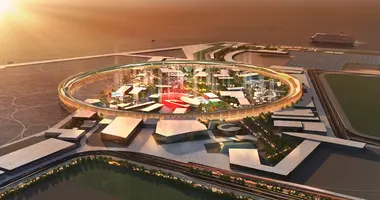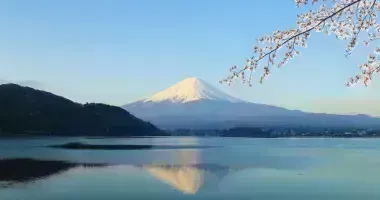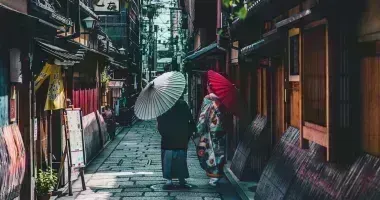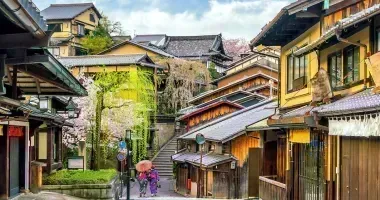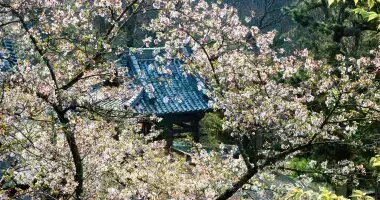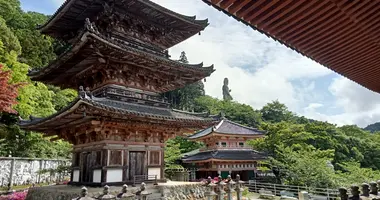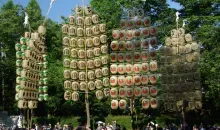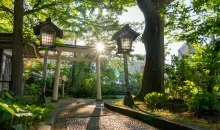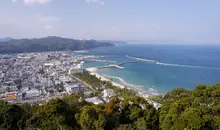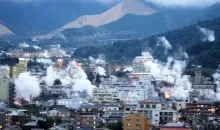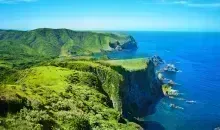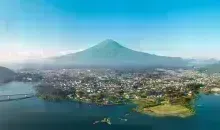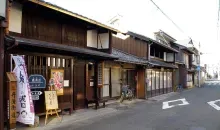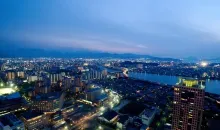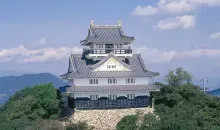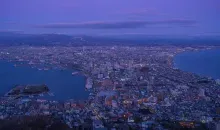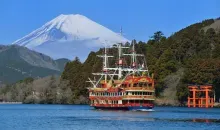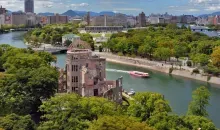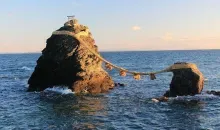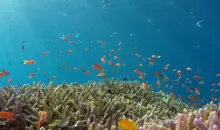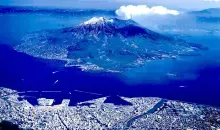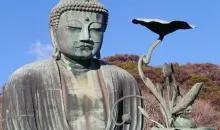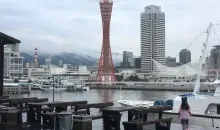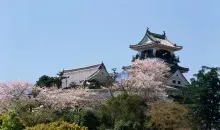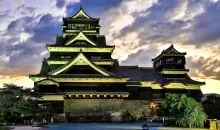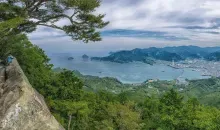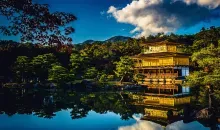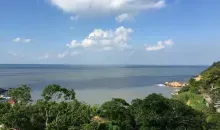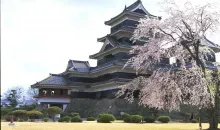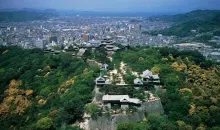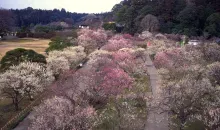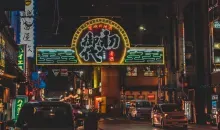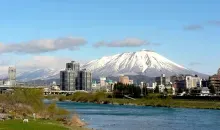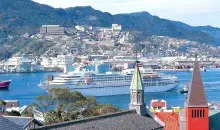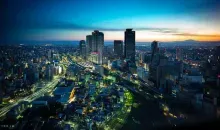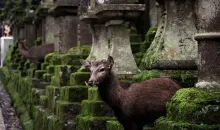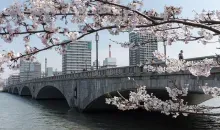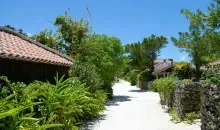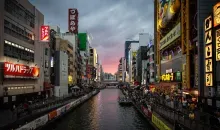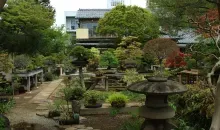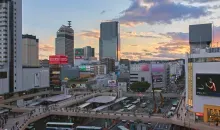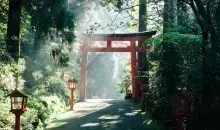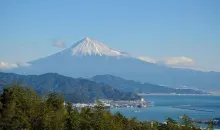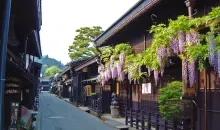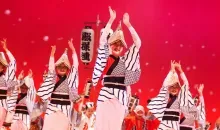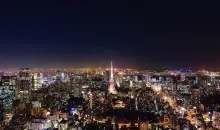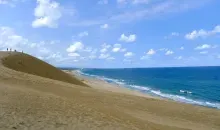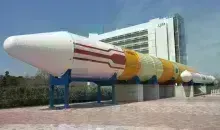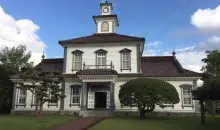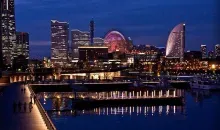Wakayama 和歌山
- Published on : 26/02/2021
- by : EP
- Youtube
Local Time 05:02
Symbol : sunny_cloudy
Temp : 20.8°C
Date : Today
Symbol : sunny_cloudy
Temp : 26.9°C
Date : Tomorrow
Symbol : sunny
Temp : 27.2°C
Date : Friday
Symbol : cloudy
Temp : 27°C
Date : Saturday
Local Time 05:02
Symbol : sunny_cloudy
Temp : 20.8°C
Date : Today
Symbol : sunny_cloudy
Temp : 26.9°C
Date : Tomorrow
Symbol : sunny
Temp : 27.2°C
Date : Friday
Symbol : cloudy
Temp : 27°C
Date : Saturday
Wakayama city is situated south of Osaka on the coast of the Kii Peninsula in the Kansai. Visitor can explore Wakayama Castle and try some of the local specialities including Chinese-style noodles, mikan oranges and pickled plums (umeboshi).
Nearest Airport
Kansai Airport (KIX)
33 - 40 minutes by train to Wakayama Station
40 minutes by the Limousine bus
Train Stations
Wakayama Station (JR Wakayama, Hanwa, Kisei lines and the Wakayama Electric Railway)
Wakayamashi Station ( JR Kisei Line, and the Nankai Railway Kada, Nankai and Wakayamako lines)
Districts
Ichibancho - Wakayama Castle and gardens and Momijidani Teien Garden
1 Chome - The Museum of Modern Art
Nachi Falls
Wakayama Travel Guide
Wakayama is a pleasant coastal city south of Osaka, one hour by express train from Namba Station.
Founded in 1889, nestled south of the mountains of Osaka Prefecture and crossed by the Kinokawa River, the town of Wakayama is now home to more than 350,000 inhabitants. The name "Wakayama" is a contraction: it is formed from the name of the nearby Wakaura Bay and Okayama, the former name of the city's castle.
Numerous traces of the feudal period are still visible in the town, from the traditional Ryujin Onsen, built by order of the lords of Wakayama and still in operation, to the continuation of the famous pilgrimage routes of Kii Mountains.
Things to see and do in Wakayama
Wakayama Castle is Wakayama's main sightseeing attraction. The castle, on Mt. Torafusu, was first constructed on the orders of Toyotomi Hideyoshi (1536-1598) in 1585.
Most of the buildings you see today were rebuilt in 1958 after the castle was badly damaged in World War II. The main entrance gate of Wakayama Castle, the Otemon Gate, was rebuilt in 1989. Only the Okaguchi Gate and the impressive stone walls remain from the original castle.
The castle grounds are Wakayama's most popular spot for cherry blossom viewing (hanami) and also contain the Nishi-no-Maru Garden (Momijidani) built by Yorinobu Tokugawa in the early 17th century.
The garden has a pond, a waterfall and is famous for its autumn leaves. The garden was adjoined to the Nishi-no-Maru palace of the domain lord.
South of the castle park is the impressively-designed Wakayama Museum of Modern Art with a collection of both Western and Japanese contemporary art, including works by Picasso, Nonagase Banka, Tanaka Kyokichi, Mark Rothko and George Segal. There is also an extensive display of modern prints.
The museum has a spacious restaurant and was designed by the celebrated Japanese architect Kisho Kurokawa, who also designed both Oita and Toyota stadiums, Kuala Lumpur Airport and the New Wing of the Van Gogh Museum, Amsterdam.
You will also find many shrines and temples, such as Awashima Jinja, the doll shrine, Kiimidera Temple, whose cherry trees are the first to bloom every year in Kansai, or the small Itakiso-Jinja shrine, dedicated to the worship of trees.
While in Wakayama, don't miss the small Bansho garden, offering a refreshing view of the turquoise blue Pacific Ocean between Honshu and Shikoku.
Wander through the hills around the town, covered with fruit trees: yuzu, peaches, persimmons, Mikan mandarins... Try your hand at picking from the farms in the area. The whole Wakayama region is full of varied and beautiful landscapes, between sea and mountains.
Wakayama Marina City
Wakayama Marina City is a "resort town" a short bus ride from Wakayama with restaurants, a hotel and Porto Europa a Europe-themed amusement park with full-scale reproductions of famous European architecture and buildings.
Shopping/Eating in Wakayama
The underground arcade at JR Wakayama Station has a number of restaurants and Izakaya. There is a department store and food hall/supermarket at the station.
The attractions of Wakayama Prefecture
Kumano Kodo
Other things to see and do in Wakayama include walking the Kumano Kodo trail with its many onsens and delightful scenery. Previously a pilgrimage route, the Kumano Kodo trail passes Hayatama Taisha, Hongu Taisha and Nachi Taisha.
The route provides access to the Kumano region, a pristine land of river, waterfall, mountain and forest. Spreading over the lower half of the Kii Peninsula south of the cities of Osaka and Kyoto, Kumano has been sacred since prehistoric times, and is widely regarded as an origin of Japanese culture and spirituality.
Nachi falls
Located in the south eastern corner of Wakayama Prefecture, this is one of the highest waterfalls in Japan - just over 130m tall. The Nachi Taisha Shrine near the base of the falls is dedicated to the kami (spirits) of the waters. The Nachi Fire Festival is held annually in July and is a celebration of the return of the twelve kami of the falls. Twelve 50kg pine torches are waved in front of the falls, while an equal number of mikoshi portable shrines are carried up to the waters.
Visitors looking for adventure will be able to try their hand at the descent of rapids on a raft in the gorges of Doro-Hatcho.
Nearby is a 7th century Tendai sect temple: Seigantoji. The temple is the oldest wooden structure in the area. Moreover, the splendid Seiganto-ji Buddhist temple and its vermilion pagoda is nestled in a magnificent natural setting, against a backdrop of mountains and waterfalls.
The sacred temples of Koyasan are in Wakayama Prefecture and give visitors the chance to stay overnight in a temple and try delicious vegetarian shojin-ryori.
Shirahama
This city, located on the coast is famous for its onsen, some of them pools right by the ocean.
At Kawayu Onsen, bathers dig into the river to create their own hot spring or in the winter season enjoy the giant Sennin-buro River Bath, created by damming the Oto River. Nachi-Katsuura on the coast of the Kii Peninsula is known for the baths at the Hotel Urashima including one in a cave looking into the ocean. Nakanoshima Ryokan is a Japanese inn with a noted rotenburo or outdoor bath. Both Japanese and western-style rooms are available.
Tanabe
With a population of approximately 80,000, this is Wakayama's second largest city and known as the "Gateway to the Kumano Kodo". Tanabe also has interesting connections with Benkei, Ueshiba Morihei and Minakata Kumagusu.
Increasingly visitors are also coming to Wakayama to see Tama the station cat at Kishi Train Station, a 30 minute ride from Wakayama Station.

Rotenburo of Hotel Urashima in Nachikatsuura, inside a large natural cave that has been eroded by the sea
By 663highland - This is a complete original image ( no retouch, and no re-compression )., CC BY 2.5, https://commons.wikimedia.org/w/index.php?curid=10965313
Wakayama culinary specialities
Wakayama is the perfect way to excite your taste buds and help you discover new horizons... In addition to being a paradise for fruit lovers, the town and the region are proud of their unique ramen recipe, based on a pork broth flavoured with soy sauce, the latter being native to the region. Ask for a chuka soba to make sure you enjoy the recipe!
Seafood and fish of all kinds are also an essential component of Wakayama's local cuisine.
So if you like fresh tuna, you've come to the right place: the best catches in the country can be found here, especially at the Kuroshio-Ichiba market. In the town's restaurants, you can enjoy the best seafood and fish, such as sea bream, caught that very morning. Meat lovers will turn to Kumano's wagyu beef, with its marbled flesh. Finally, another Wakayama speciality not to be missed is Kishu Umeboshi, an ume (Japanese plum) marinated in salt.
Getting Around Wakayama City
It is fairly easy to get around Wakayama on foot but there is a good municipal bus service with many buses departing from JR Wakayama Station and Wakayama-shi Station.
Wakayama Access - Getting to Wakayama
Train
Wakayama is easy to reach from both Kyoto and Osaka. There are JR express trains to JR Wakayama Station from Kyoto Station and Shin-Osaka Station. Alternatively, take a local train from Tennoji Station on the Hanwa Line (1 hour). There are also trains from Osaka Namba Station on the Nankai Line to Wakayami-shi Station (1 hour). The JR Kisei Line links JR Wakayama Station to Wakayama-shi Station. For Koyasan there are trains from JR Wakayama Station to Hashimoto (1 hour), then change to the Nankai Line to Gokurakubashi.
Ferry
The ferry port to Tokushima on Shikoku is on the Nankai Line or you can take a taxi from town. Nankai ferries take two hours. A reservation is not necessary but may be needed on busy days. Please arrive at the ferry port 30 minutes before the sailing. There are sailings from Wakayama at 2.40 am, 5.35 am, 8.30 am, 10.35 am, 1.40 pm, 4.25 pm, 7.15 pm and 9.40 pm. See Nankai Ferry for further details.
Boats to and Awaji used to leave from Fuke-ko Port to the north of Wakayama but are now discontinued.
Bus
Wakayama Castle is a 20 minute walk from JR Wakayama Station or a 10 minute walk from Nankai Wakayami-shi Station. There are buses from both places to the castle park entrance. Get off the bus at Koen-mae.
Travel to Wakayama with a Japan Rail Pass
Interested by Wakayama
Discover other cities to explore










